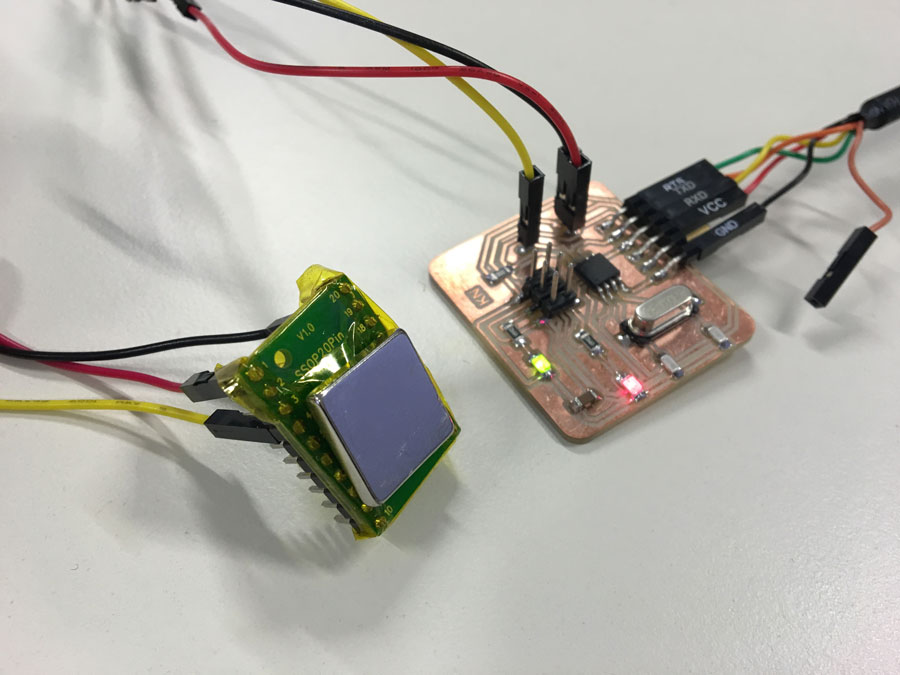
E16: Interface and Application Programming
-
Assignment:
- Write an application that interfaces with an input &/or output device that you made, comparing as many tool options as possible Software:
- Processing Results:

How to MAKE it
I wanted to use my ADCInputBoard from week 11 to read the magnatic field from the hall sensor I have attached to the board and to produce a visual output.
For this assigment I used Processsing.
As a basis I used this simple Graph example, by David A. Mellis, Tom Igoe and Scott Fitzgerald
However, I did modifications to make it work and to improve. First, I had to change the baud rate to 4800.
I also wanted to visualize not just a value read from the serial input, I also wanted to distingush between the orientation of the magnet (north and south pole). Thus, I added some conditions and changed the output graph.


Here is the code
/* Processing example for serial communication and visual output
// This program takes ASCII-encoded strings
// from the serial port at 4800 baud and graphs them. It expects values in the
// range 0 to 1023, followed by a newline, or newline and carriage return
// Original by David A. Mellis, modified by Tom Igoe and Scott Fitzgerald
// and finally modified by Karsten Nebe for FabAcademy 2016
// This example code is in the public domain.
*/
import processing.serial.*;
Serial myPort; // The serial port
int xPos = 1; // horizontal position of the graph
float inByte = 0;
void setup () {
// set the window size:
size(800, 400);
// List all the available serial ports
// if using Processing 2.1 or later, use Serial.printArray()
println(Serial.list());
// I know that the first port in the serial list on my mac
// is always my Arduino, so I open Serial.list()[0].
// Open whatever port is the one you're using.
myPort = new Serial(this, Serial.list()[1], 4800);
// don't generate a serialEvent() unless you get a newline character:
myPort.bufferUntil('\n');
// set inital background:
background(0);
}
void draw () {
// draw the line (in differnt colors for N/S):
if ( inByte > height/2 ){
stroke(127, 34, 255); // blue
line(xPos, height/2 , xPos, height - inByte);
}
else{
stroke(255, 0, 0); // red
line(xPos, height - inByte, xPos, height/2 );
}
// at the edge of the screen, go back to the beginning:
if (xPos >= width) {
xPos = 0;
background(0);
} else {
// increment the horizontal position:
xPos++;
}
}
void serialEvent (Serial myPort) {
// get the ASCII string:
String inString = myPort.readStringUntil('\n');
if (inString != null) {
// trim off any whitespace:
inString = trim(inString);
// convert to an int and map to the screen height:
inByte = float(inString);
inByte = map(inByte, 0 , 1023, 0, height);
println(inByte);
}
}
Downloads
Processing file 'serialCommunicationADCInputBoard.pde'Take Away's
Using serial communication in processing is surprisingly easy - it is almost similar to the way you do it in the Arduino environment (using standard libraries).